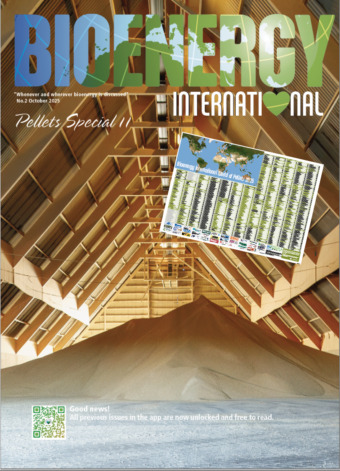The American biogas industry is entering a historic growth phase, fueled by surging demand for reliable energy, the need to reduce waste, and massive pipeline of untapped development opportunities across all 50 states, according to new data released by the American Biogas Council (ABC) at its annual BIOGAS AMERICAS trade show and conference.
The numbers – which tally potential biogas projects in each state and represent the most comprehensive collection to date – show that with nearly 2,500 operational biogas systems already in place and an estimated 17,000 additional projects ready for deployment, the country stands on the brink of a transformation where food waste, sewage, manure and other organics are optimized for clean energy.
Last year, 125 new projects came online, totaling US$3 billion in capital expenditures.
Biogas is no longer a niche technology – it’s spreading economic growth nationwide across the energy, waste, and agriculture sectors. We’re seeing record investment and record momentum, and we’re just getting started, ABC Executive Director Patrick Serfass said in his opening remarks at the conference, held this year in Denver, Colorado.
Untapped opportunity

Despite this progress – and biogas systems operating in all 50 states – the United States has only scratched the surface of its biogas potential. Just 14.7 percent of all potential biogas facilities have been built.
The industry’s momentum was displayed at this year’s BIOGAS AMERICAS conference, which featured 350 exhibits and 2,200 participants, breaking attendance records for the fourth year.
Currently, the US biogas market is a US$37.6 billion industry, and according to ABC, it is growing at the fastest rate in its history. The United States is home to approximately:
- 607 anaerobic digesters on farms;
- 1,188 water resource recovery facilities using digesters;
- 111 stand-alone food waste systems; and
- 539 landfill gas capture projects.
However, the industry’s growth potential is 500 percent greater, including:
- 11,205 livestock farms;
- 3,743 additional water resource recovery facilities;
- 1,370 food scrap-only systems; and
- 731 landfills with gas collection opportunities.
If fully realized, these new biogas systems could generate 204 billion kWh of renewable electricity annually or produce 2,914 billion cubic feet (bcf) per year of biogas.
In addition, the ABC estimates that these new biogas systems would also:
- Offset greenhouse gas (GHG) emissions equivalent to removing 2.6 million cars from the road;
- Unlock US$450 billion in capital investment; and
- Create 900,000 short-term construction jobs, deliver 45,000 permanent operations jobs with indirect benefits to manufacturers, suppliers, and rural communities.
Unlike intermittent renewables, biogas provides 24/7 clean, firm power and can be used to produce electricity, pipeline-grade renewable natural gas (RNG aka biomethane), and vehicle fuel.
Biogas systems recycle organic waste into valuable energy and fertilizer, support sustainable agriculture, and strengthen local economies.
Positive polling data

Additionally, the ABC highlighted new national polling data at BIOGAS AMERICAS that demonstrates broad interest by American voters in energy solutions that reduce waste and produce reliable, renewable power, among a variety of national issues.
Citing the polling data, Patrick Serfass highlighted that US voters’ perception of the industry increases from 37 percent favorability to 86 percent after just learning what biogas is.
The national poll, commissioned in April 2025 by the American Biogas Council, also shows broad voter concern that politicians are neglecting the American farming and renewable energy sectors.
Biogas checks the boxes for sustainability, reliability, and economic growth, and the more Americans learn about biogas, the more they like what they hear. The future of American energy is clean, local, and circular, Patrick Serfass said.



